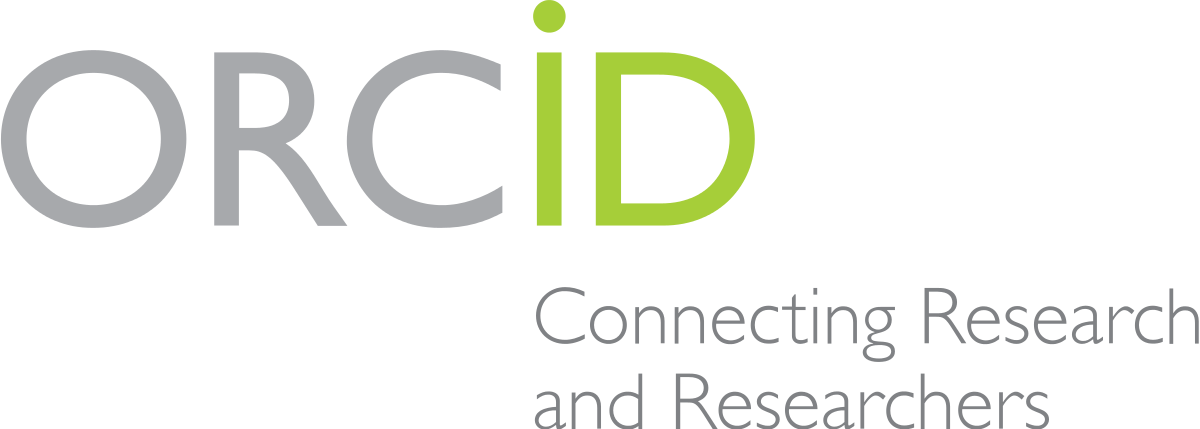Síndrome del Comedor Nocturno: Estrategias crono Nutricionales
Resumen
El síndrome de comedor nocturno (SCN) es un trastorno alimentario descrito en el Manual Diagnóstico y Estadístico de los Trastornos Mentales. Se caracteriza por una alteración en el ritmo circadiano de ingesta de alimentos, con una tendencia a comer de manera excesiva por la noche y niveles anormales de melatonina. Los pacientes consumen entre el 50-70% de las calorías diarias después de la cena, presentan anorexia matinal e insomnio acompañado de ingestas nocturnas, con episodios que ocurren al menos una vez por semana durante tres meses consecutivos. El tratamiento del SCN debe ser individualizado, abordando tanto aspectos farmacológicos como no farmacológicos. Se evaluó la efectividad de la ingesta dietética y la suplementación con magnesio y triptófano en el manejo del SCN. A través de una revisión de literatura de los últimos 10 años en la base de datos PubMed, se analizaron 283 artículos, de los cuales se incluyeron 7 para este estudio. Los resultados sugieren que una dieta rica en triptófano o magnesio, así como la suplementación con estos, podría mejorar la calidad del sueño y reducir los episodios de ingesta nocturna en pacientes con insomnio.
Descargas
Citas
Allison, K. C., Ahima, R. S., O’Reardon, J. P., Dinges, D. F., Sharma, V., Cummings, D. E., et al. (2005a). Neuroendocrine profiles associated with energy intake, sleep, and stress in the night eating syndrome. The Journal of Clinical Endocrinology & Metabolism, 90, 6214–6217. https://doi.org/10.1210/jc.2005-1207
Allison, K. C., Grilo, C. M., Masheb, R. M., & Stunkard, A. J. (2005b). Binge eating disorder and night eating syndrome: A comparative study of disordered eating. Journal of Consulting and Clinical Psychology, 73, 1107–1115. https://doi.org/10.1037/0022-006x.73.6.1107
Allison, K. C., Lundgren, J. D., Moore, R. H., O’Reardon, J. P., & Stunkard, A. J. (2010). Cognitive behavior therapy for night eating syndrome: A pilot study. American Journal of Psychotherapy, 64, 91–106. https://doi.org/10.1176/appi.psychotherapy.2010.64.1.91
Allison, K. C., Lundgren, J. D., O’Reardon, J. P., Geliebter, A., Gluck, M. E., Vinai, P., et al. (2009). Proposed diagnostic criteria for night eating syndrome. International Journal of Eating Disorders, NA-NA. https://doi.org/10.1002/eat.20576
Allison, K. C., Spaeth, A., & Hopkins, C. M. (2016). Sleep and eating disorders. Current Psychiatry Reports, 23, 18-92. https://doi.org/10.1007/s11920-016-0676-y
Allison, K. C., & Tarves, E. P. (2011). Treatment of night eating syndrome. Psychiatric Clinics of North America, 34, 785–796. https://doi.org/10.1016/j.psc.2011.08.002
American Psychiatric Association. (2013). Guía de consulta de los criterios diagnósticos del DSM-5®. American Psychiatric Publishing.
Arab, A., Rafie, N., Amani, R., & Shirani, F. (2022). The role of magnesium in sleep health: A systematic review of available literature. Biological Trace Element Research, 175, 102–112. https://doi.org/10.1007/s12011-021-02653-y
Bruzas, M. B., & Allison, K. C. (2019). A review of the relationship between night eating syndrome and body mass index. Current Obesity Reports, 27, 145–155.
https://doi.org/10.1007/s13679-019-00345-6
Costa, M. B., Stein, A. T., Harb, A., & Melnik, T. (2015). Pharmacological and psychosocial interventions for night eating syndrome in adults. Cochrane Database of Systematic Reviews, 2021(12). https://doi.org/10.1002/14651858.CD012271.pub2
Demisch, K., Bauer, J., & Georgi, K. (1987). Treatment of severe chronic insomnia with L-tryptophan and varying sleeping times. Pharmacopsychiatry, 20, 245–248.
https://doi.org/10.1055/s-2007-1017104
de Zwaan, M., Roerig, D. B., Crosby, R. D., Karaz, S., & Mitchell, J. E. (2006). Nighttime eating: A descriptive study. International Journal of Eating Disorders, 39, 224–232.
https://doi.org/10.1002/eat.20253
Errandonea, I. U. (2012). Obesidad y trastornos de alimentación. Revista Médica Clínica Las Condes, 23, 165–171. https://doi.org/10.1016/s0716-8640(12)70340-0
Fukushige, H., Fukuda, Y., Tanaka, M., Inami, K., Wada, K., & Tsumura, Y., et al. (2014). Effects of tryptophan-rich breakfast and light exposure during the daytime on melatonin secretion at night. Journal of Physiological Anthropology, 33, 33. https://doi.org/10.1186/1880-6805-33-33
Goncalves, M. D., Moore, R. H., Stunkard, A. J., & Allison, K. C. (2009). The treatment of night eating: The patient’s perspective. European Eating Disorders Review, 17, 184–190.
https://doi.org/10.1002/erv.920
Hamurcu, P. (2022). Can night eating syndrome and sleep quality have strong relations with quality of life in early adulthood? Problems of Nutrition, 91, 51–57.
https://doi.org/10.24953/turkjpnurs.2022.51
Latzer, Y., Yutal, A. E., Givon, M., Kabakov, O., Alon, S., Zuckerman-Levin, N., et al. (2020). Dietary patterns of patients with binge eating disorders with and without night eating. Eating and Weight Disorders, 25, 321–328. https://doi.org/10.1007/s40519-019-00674-5
Lundgren, J. D., Allison, K. C., Crow, S., O’Reardon, J. P., Berg, K. C., & Galbraith, J., et al. (2006). Prevalence of the night eating syndrome in a psychiatric population. American Journal of Psychiatry, 163, 156–158. https://doi.org/10.1176/appi.ajp.163.1.156
Lundgren, J. D., McCune, A., Spresser, C., Harkins, P., Zolton, L., & Mandal, K. (2011). Night eating patterns of individuals with eating disorders: Implications for conceptualizing the night eating syndrome. Psychiatry Research, 186, 103–108.
https://doi.org/10.1016/j.psychres.2010.07.021
Lundgren, J. D., & Pona, A. (2015). Assessment of night eating. In Encyclopedia of feeding and eating disorders (pp. 1–5). Springer. https://doi.org/10.1007/978-981-287-087-2_56-1
Lundgren, J. D., Rempfer, M. v., Brown, C. E., Goetz, J., & Hamera, E. (2010). The prevalence of night eating syndrome and binge eating disorder among overweight and obese individuals with serious mental illness. Psychiatry Research, 175, 233–236.
https://doi.org/10.1016/j.psychres.2009.03.021
Mah, J., & Pitre, T. (2021). Oral magnesium supplementation for insomnia in older adults: A systematic review & meta-analysis. BMC Complementary Medicine and Therapies, 21, 125. https://doi.org/10.1186/s12906-021-03308-3
McCuen-Wurst, C., Ruggieri, M., & Allison, K. C. (2018). Disordered eating and obesity: Associations between binge-eating disorder, night-eating syndrome, and weight-related comorbidities. Annals of the New York Academy of Sciences, 1411, 96–105.
https://doi.org/10.1111/nyas.13580
Meng, X., Li, Y., Li, S., Zhou, Y., Gan, R. Y., & Xu, D. P., et al. (2017). Dietary sources and bioactivities of melatonin. Nutrients, 9, 367. https://doi.org/10.3390/nu9040367
Milano, W., de Rosa, M., Milano, L., & Capasso, A. (2011). Night eating syndrome: An overview. Journal of Pharmacy and Pharmacology, 64, 2–10. https://doi.org/10.1111/j.2042-7158.2011.01379.x
Nielsen, F. H., Johnson, L. K., & Zeng, H. (2010). Magnesium supplementation improves indicators of low magnesium status and inflammatory stress in adults older than 51 years with poor quality sleep. Magnesium Research, 23, 158–168.
https://doi.org/10.1684/mrh.2010.0227
Orhan, F. O., Ozer, U. G., Ozer, A., Altunoren, O., Celik, M., & Karaaslan, M. F. (2011). Night eating syndrome among patients with depression. Israel Journal of Psychiatry and Related Sciences, 48, 212–217.
Palmese, L. B., Ratliff, J. C., Reutenauer, E. L., Tonizzo, K. M., Grilo, C. M., & Tek, C. (2013). Prevalence of night eating in obese individuals with schizophrenia and schizoaffective disorder. Comprehensive Psychiatry, 54, 276–281.
https://doi.org/10.1016/j.comppsych.2012.09.002
Pinto, T. F., Silva, F. G. C. da, Bruin, V. M. S. de, & Bruin, P. F. C. de. (2016). Night eating syndrome: How to treat it? Revista da Associação Médica Brasileira, 62, 701–707.
https://doi.org/10.1590/1806-9282.62.07.701
Saraçlı, Ö., Atasoy, N., Akdemir, A., Güriz, O., Konuk, N., Sevinçer, G. M., et al. (2015). The prevalence and clinical features of the night eating syndrome in psychiatric out-patient population. Comprehensive Psychiatry, 57, 79–84.
https://doi.org/10.1016/j.comppsych.2015.01.002
Striegel-Moore, R. H., Franko, D. L., Thompson, D., Affenito, S., May, A., & Kraemer, H. C. (2008). Exploring the typology of night eating syndrome. International Journal of Eating Disorders, 41, 411–418. https://doi.org/10.1002/eat.20512
Sutanto, C. N., Loh, W. W., & Kim, J. E. (2022). The impact of tryptophan supplementation on sleep quality: A systematic review, meta-analysis, and meta-regression. Nutrition Reviews, 80, 306–316. https://doi.org/10.1093/nutrit/nuaa131
Aguirre Chávez, J. F., Franco Gallegos, L. I., Ivett Robles Hernández, G. S., Montes Mata, K. J., & Ponce de León, A. C. (2024). Actividad Física como Estrategia Terapéutica en el Manejo de la Diabetes Tipo 2: Evidencia Actual. Estudios Y Perspectivas Revista Científica Y Académica , 4(2), 48–65. https://doi.org/10.61384/r.c.a.v4i2.197
Salazar Ayala, C. M., Maribhy Dinorha Cruz Galindo, Murillo Ortiz , B. O., Luna Ruiz, M. Ángel, & Razo Mendoza, L. F. (2024). Relación de Niveles de Endocannabinoides y Perfil Metabólico en Pacientes con Síndrome de Ovario Poliquístico. Revista Científica De Salud Y Desarrollo Humano, 5(1), 269–288. https://doi.org/10.61368/r.s.d.h.v5i1.90
Agrela Rodrigues, F. de A. (2024). Aperfeiçoamento do Método 40P/30G/30C para o Emagrecimento. Emergentes - Revista Científica, 4(1), 381–389. https://doi.org/10.60112/erc.v4i1.115
García, S. (2023). Desarrollo de productos y servicios sostenibles y ecológicamente responsables. Una revisión de la literatura, 2021. Revista Veritas De Difusão Científica, 4(2), 102–119. https://doi.org/10.61616/rvdc.v4i2.49
Martínez, O., Aranda , R., Barreto , E., Fanego , J., Fernández , A., López , J., Medina , J., Meza , M., Muñoz , D., & Urbieta , J. (2024). Los tipos de discriminación laboral en las ciudades de Capiatá y San Lorenzo. Arandu UTIC, 11(1), 77–95. Recuperado a partir de https://www.uticvirtual.edu.py/revista.ojs/index.php/revistas/article/view/179
v, H., & Quispe Coca, R. A. (2024). Tecno Bio Gas. Horizonte Académico, 4(4), 17–23. Recuperado a partir de https://horizonteacademico.org/index.php/horizonte/article/view/14
Da Silva Santos , F., & López Vargas , R. (2020). Efecto del Estrés en la Función Inmune en Pacientes con Enfermedades Autoinmunes: una Revisión de Estudios Latinoamericanos. Revista Científica De Salud Y Desarrollo Humano, 1(1), 46–59. https://doi.org/10.61368/r.s.d.h.v1i1.9
Takeda, E., Terao, J., Nakaya, Y., Miyamoto, K. ichi, Baba, Y., & Chuman, H., et al. (2004). Stress control and human nutrition. The Journal of Medical Investigation, 51, 139–145. https://doi.org/10.2152/jmi.51.139
Townsend, A. B. (2007). Night eating syndrome. Holistic Nursing Practice, 21, 217–221. https://doi.org/10.1097/01.hnp.0000287983.75887.a3
Vander Wal, J. S. (2012). Night eating syndrome: A critical review of the literature. Clinical Psychology Review, 32, 49–59. https://doi.org/10.1016/j.cpr.2011.10.001
Vinai, P., Allison, K. C., Cardetti, S., Carpegna, G., Ferrato, N., Masante, D., et al. (2008). Psychopathology and treatment of night eating syndrome: A review. Eating and Weight Disorders - Studies on Anorexia, Bulimia and Obesity, 13, 54–63.
https://doi.org/10.1007/BF03327615
Wada, K., Yata, S., Akimitsu, O., Krejci, M., Noji, T., Nakade, M., et al. (2013). A tryptophan-rich breakfast and exposure to light with low color temperature at night improve sleep and salivary melatonin level in Japanese students. Journal of Circadian Rhythms, 11, 4. https://doi.org/10.5334/jcr.ac
Zhang, Y., Chen, C., Lu, L., Knutson, K. L., Carnethon, M. R., & Fly, A. D., et al. (2022). Association of magnesium intake with sleep duration and sleep quality: Findings from the CARDIA study. Sleep, 45. https://doi.org/10.1093/sleep/zsac062
Derechos de autor 2024 Jasser Palacios Guzman , Kyara Castro Moreno, Juan Morán Zuloaga, Celia Rodríguez Borjabad, Jestin Quiroz Brunes

Esta obra está bajo licencia internacional Creative Commons Reconocimiento 4.0.











.png)




















.png)
1.png)


